‘INTIAC - h1n1’ is a generative composition, sonic interpretation and analysis of the genetic code or RNA of the H1N1 influenza virus. The 95 virus samples used for this 12-minute composition were collected during a medical study tracking the outbreak of H1N1 in Brazil in 2017. All compositional progression within the work is determined by the RNA sequences of the collected medical samples and the slight variations within this code. |
The musical terrain of the composition is based purely on aesthetic values. Its sounds, notes and tonality are not representational of, or directly linked to virology. It is the performance of the work by the generative computer system that has a direct relationship to the RNA sequence of the virus. Much like the virus itself, the underlying structure of the composition could be seen as an interpretive mechanism of the genetic data of the virus. |
The RNA sequence of a virus is essentially the hereditary encoded genetic information of the virus. The scientific samples used for this project are thus nothing but a set of analysed and ordered variations of organic code. As a set of natural code they outline or describe the spread and progression of H1N1 in Brazil in 2017. Once translated into computer code, this natural code can become encoded sonic information. It becomes the data that determines the musical progression and change within the composition. |
‘INTIAC’ is thus an artificial organism that functions by analysing and decoding the collected and ordered genetic information of a natural organism. |
|
Background information on the scientific date and its visualisation: |

|
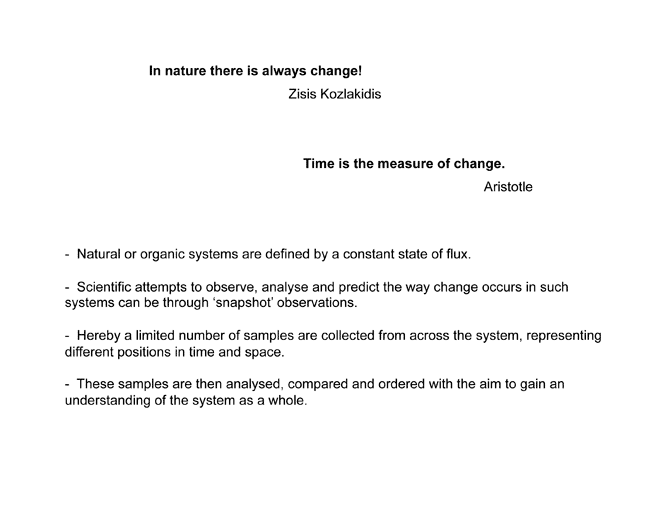
|

|
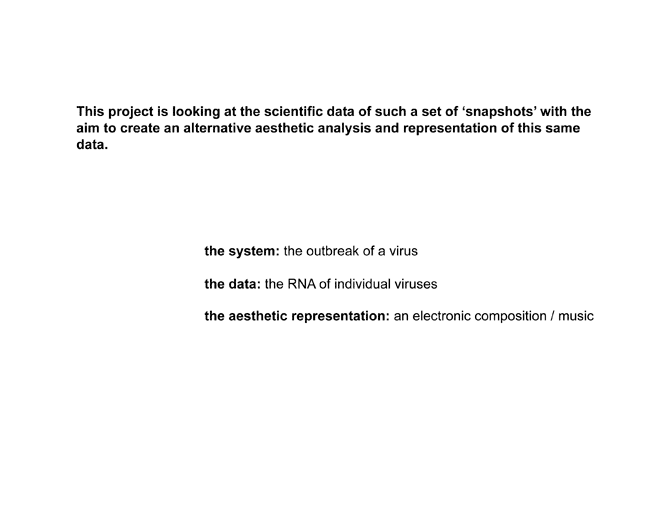
|

|
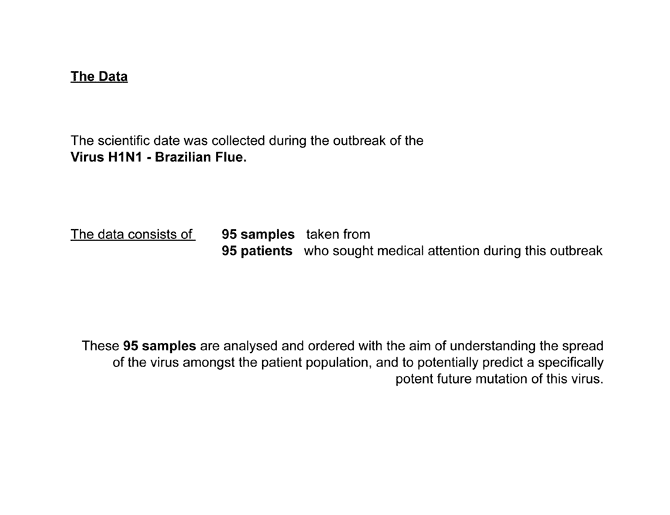
|

|
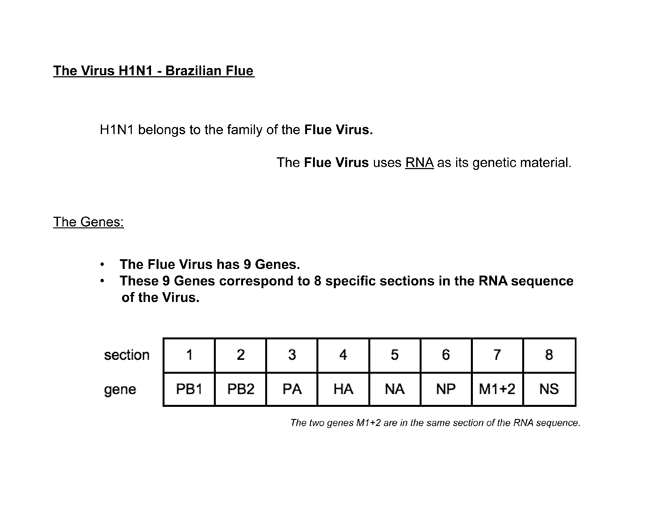
|

|
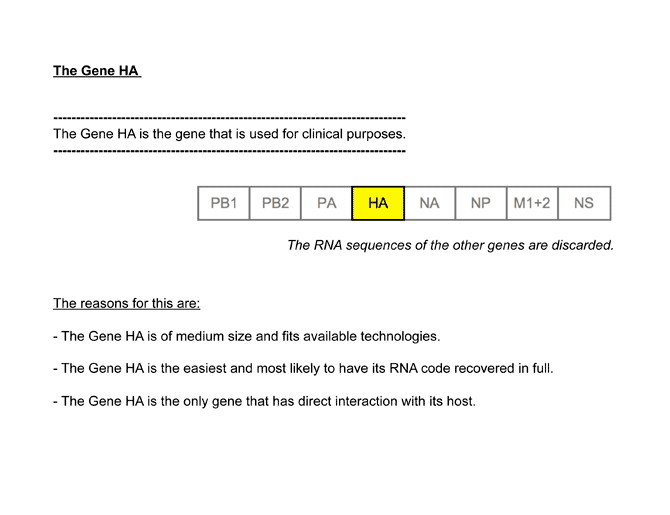
|

|
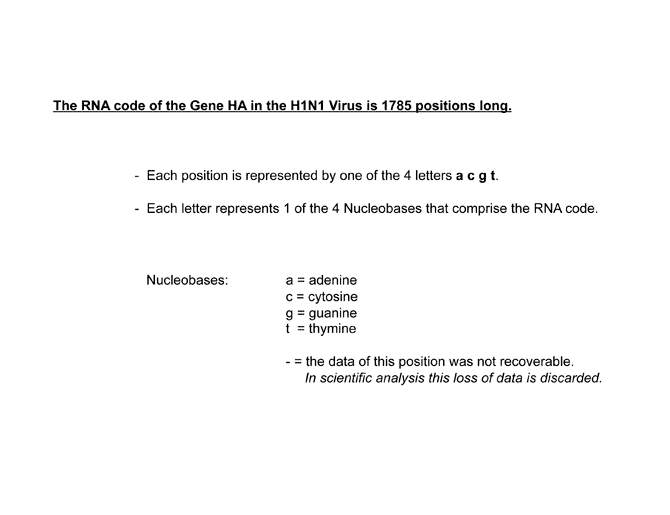
|

|
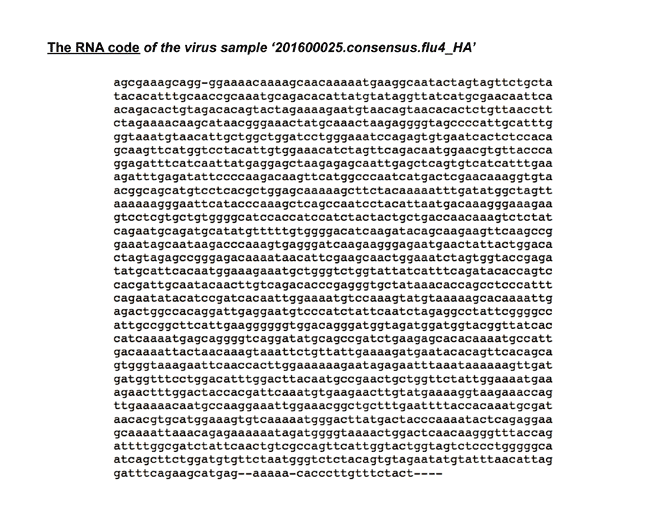
|

|
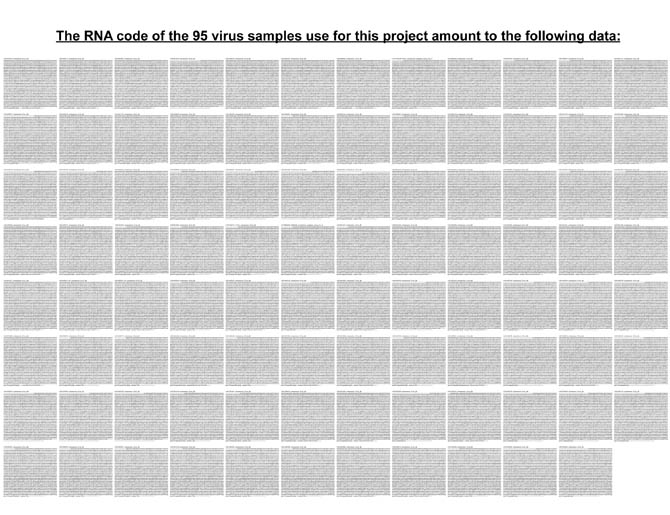
|

|
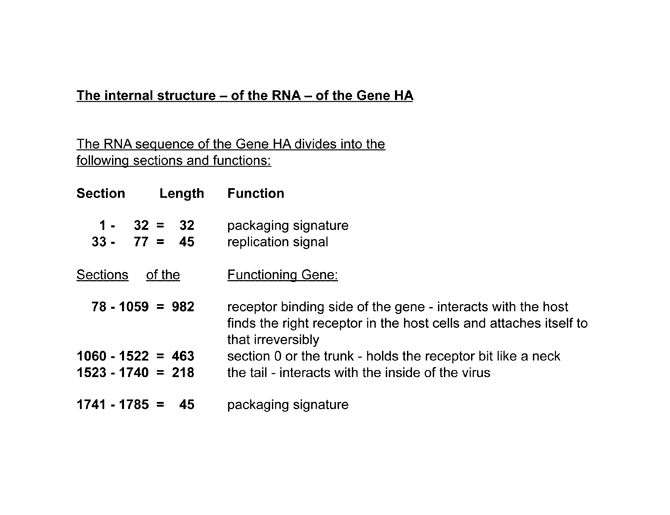
|

|
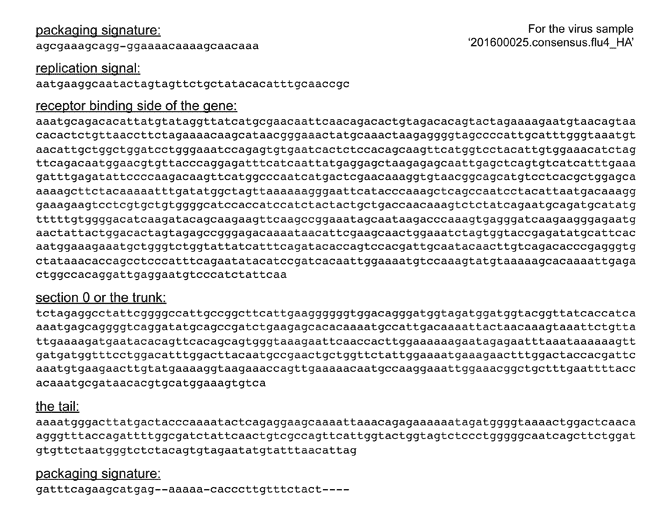
|

|
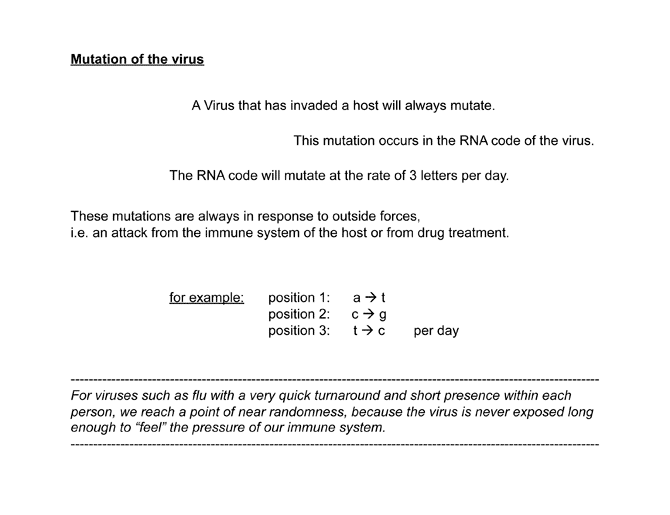
|

|
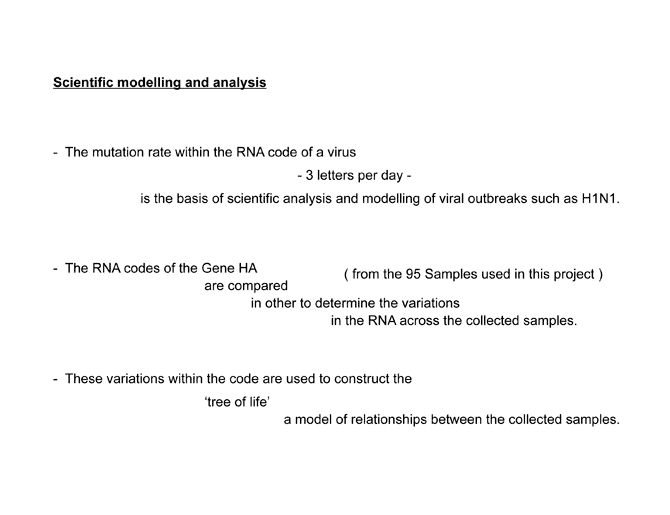
|

|
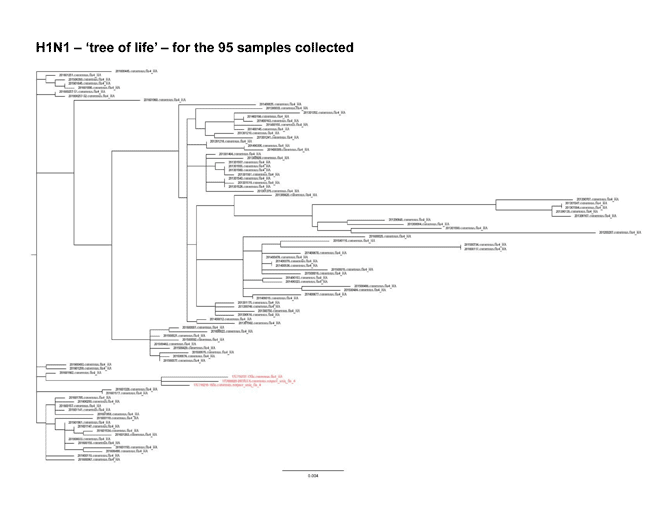
|

|
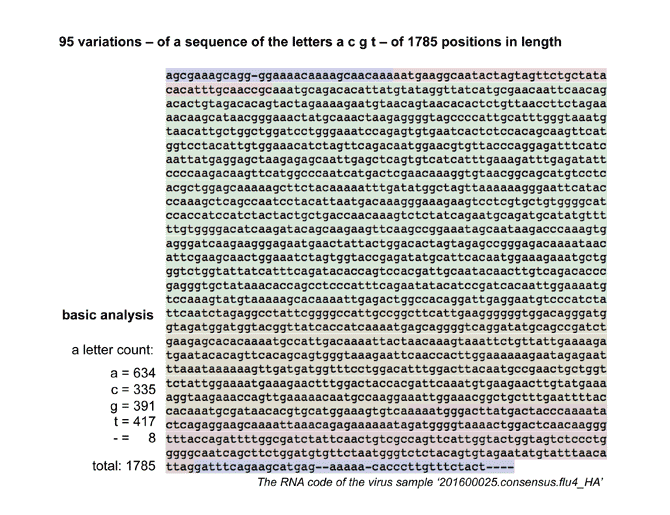
|

|
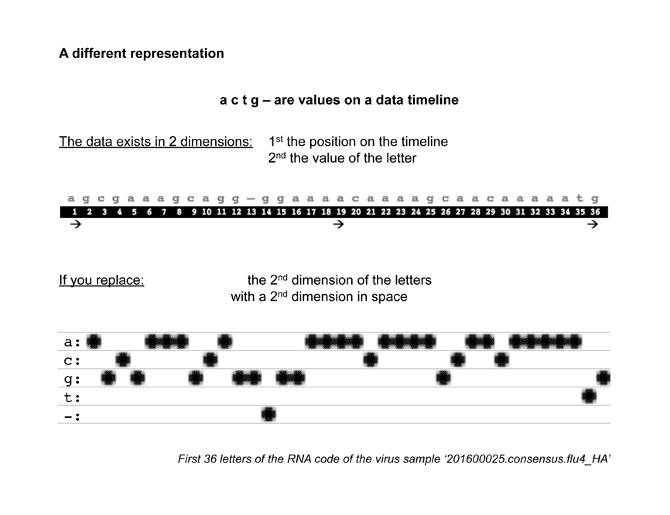
|

|
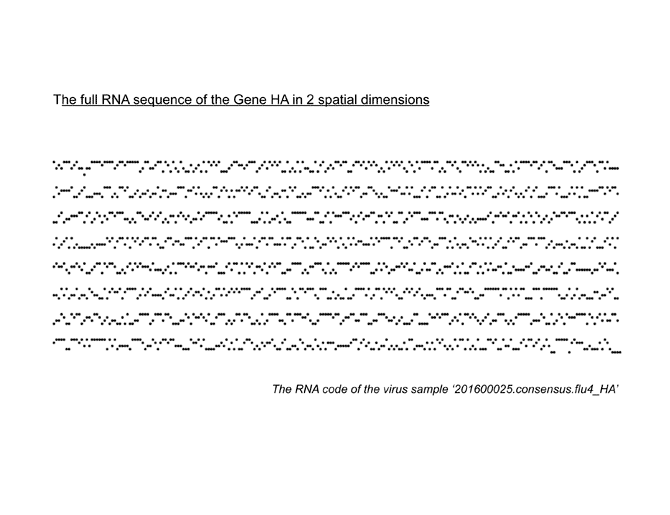
|

|
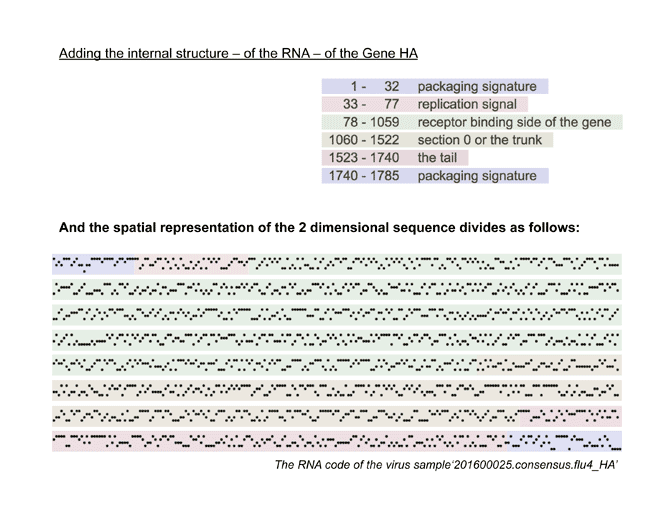
|

|
Short explanations of important terminology |
Virus – A small microorganism that is reliant on invading the living cells of a host. It uses the chemical machinery of these host cells to keep itself alive and to replicate. A virus can have DNA or RNA as its genetic material. It has the ability to mutate and thus change its genetic material in response to attacks from the immune system of the host, drug treatment or randomly. Viruses can infect any kind of life form, but it is uncertain if a virus itself can be considered a living organism. |
Host – An organism that harbours or is infected by a parasite, such as a virus. The host commonly provides nourishment, shelter and the environment for reproduction to the parasite. The interaction between a parasite and its host is never a mutual interaction and does not provide any benefits to the host. The Host is often harmed by the parasitic invader, and can be killed by the same. |
Outbreak – A sudden increase in cases of a particular infectious disease amongst a community, population or region at a particular period in time. Different outbreaks of the same virus are often defined by specific mutations within the genetic material of the virus. |
Gene – A specific section in the DNA or RNA sequence of an organism that encodes a particular function or trade. Genes are hereditary material and as such passed on to offspring during the process of reproduction or replication. Mutations within the sequence of a gene can lead to the evolution of a gene across a population through processes such as natural selection. |
RNA – A molecule that is essential to coding and decoding the genetic information of certain organisms. It is very similar in its chemical structure to the better-known DNA. RNA is used by large number of viruses to encode their genetic material. For this purpose RNA is assembled as a varying chain of its four different components adenine, cytosine, guanine and thymine. In scientific analysis of RNA these are represented by the letters a c g t.
|
Mutation – A relatively permanent and hereditary change in the in the genetic material of an organism due to outside influences or random chance events. Dependent on the organism these changes occur in the organism’s DNA or RNA sequence. Mutations can either result in harm to the organism, be of neutral effect, or be beneficial to the organism’s long term chance of survival. Mutations are the essential instrument for evolutionary development in any species.
|
Tree of life – A metaphor representing the idea that all life on earth is related trough a common ancestor. In biology the tree of life model is used to describe and visualise the evolutionary relationship between different organisms through time. |